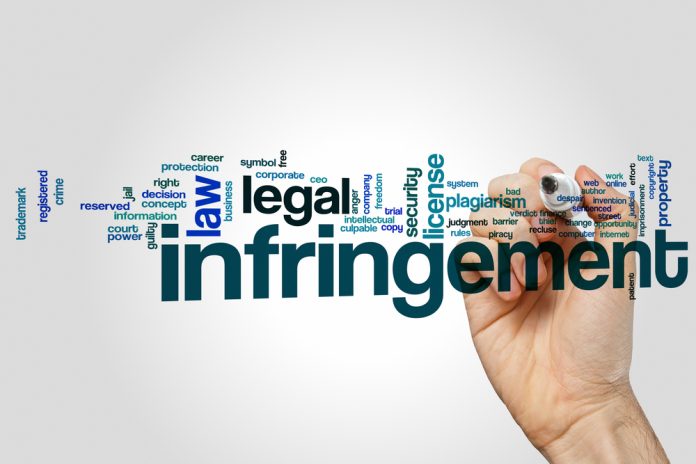This article is written by Kavana Rao from Symbiosis Law School, Noida. In this article, we will understand if abbreviations can be trademarked.
Table of Contents
Introduction
The external appearance of a brand or a product is its primary recognition. Customers will identify the brand or company first by its brand and hence trademarking is very important for brand recognition. With many companies and entities in the market, there is bound to be repetition and confusion among the consumers with respect to the brand and the product, therefore, trademarking will help avoid this confusion and further avoid legal conflicts and lengthy litigation.
A trademark is a logo, which is used by a manufacturer to distinguish their goods or services from other manufacturers. The logo may be in the form of a letter, word, number, symbol or design. Words and pictures are the most common forms of trademark, but other unique signs can be registered, so long as they are capable of being represented graphically. For example, designs that have successfully been protected as trademarks (e.g. the Coca-Cola bottle) are colours (e.g. the yellow colour of Yellow Pages), family names (e.g. Louis Vuitton) and even smells and sound.
What is an abbreviation
An abbreviation is a shortened form of a word or phrase. They are also known as acronyms, where acronyms are abbreviations of longer words with the initial letters or group of letters in a set phrase. Some examples for abbreviations can be BMW which stands for Bayerische Motoren Werke, which translates to Bavarian Engine Works Company.
Can an abbreviation be a trademark
Section 2(m) explains ‘mark’ under the Trade Marks Act, 1999 as any device, brand, heading, label, ticket, name, signature, word, letter, numeral, shape of goods, packaging or combination of colours or combination of any kind. As per this definition, abbreviations are a type of trademark and thus must be protected from infringement, but there are certain limitations. Abbreviations or acronyms cannot always qualify as a trademark. For an acronym to be treated as a trademark, it must essentially comply with certain factors
- It must not be descriptive of the kind of product, packaging, etc.
- The consumers must not be able to associate it with the products of others, and therefore the abbreviations must also be prominently different and not generic.
- It must be filed in a separate application after the registration of the name.
Section 9 of the Act, defines certain absolute grounds for the refusal of registration. They are:
- If the mark lacks distinctive character and cannot be distinguished from others’ goods or services
- If the trademark consists of marks or indications which describes the kind, quality, intended purpose, values or geographical origin or time of production or other characteristics of the goods or services
- If the marks or indications have become customary in the current language or in the established routine of trade
If the abbreviation or acronym falls under any of these grounds, then the abbreviation or acronym can be denied registration.
Can it be infringed
As per Section 29 of the Trade Mark Act,1999 a registered trademark can be infringed by someone who is neither a registered proprietor nor a person who has been permitted to make use of the trademark and using it in the due course of trade will be held as an infringement of the trademark. In addition to this, it will also be known as infringement if a mark resembles the registered trademark and resembles the goods and services covered by such registered trademark. Lastly, it would also be held as an infringement of trademark, if a person used a registered trademark as his trade name or part of his trade name or name of his business concern or part of the name of his business concern.
Remedies available in case of infringement
Criminal remedies
- Section 103 states penalties for applying for false trademarks, trade descriptions, etc. If there is a contravention of the trademark of any individual or entity, then the guilty person will be subjected to a period of imprisonment for a period of six months or is liable to pay a fine that may extend up to fifty thousand rupees.
- Section 105 defines punishment for the second or subsequent offence under Section 103 and 104. Under this Section, the guilty will be subjected to imprisonment for a term which will not be less than one year and which may extend for a period of 3 years and with a fine which will not be less than one lakh and which may extend to two lakhs.
Civil remedies
- Injunctions- To protect the interests of the owners of intellectual property rights, the courts can issue an injunction and direct customs authorities to withhold the infringing material/shipment or restrict its disposal in any other way.
- The aggrieved party can claim damages because the infringement of the trademark led them to suffer losses in their business or claim accounts of profit, delivery of the infringing goods for destruction.
- Section 135 of the Trade Marks Act, 1999 identifies the Anton Piller Order which prevents the defendant from taking off assets from the court’s jurisdiction. Under this Section, the court prevents the goods or materials that are infringing by ordering to seal the concerned goods or materials.
Therefore, under civil remedies, Courts either order for the grounding to the infringing goods or materials or make the defendant pay for the damages caused to the plaintiff.
Administrative remedies
The different ways of carrying out administrative remedies are by correcting the trademark which resembles the trademark that had previously been registered. Another administrative remedy that can be availed, is keeping a check on the trade activities of the goods that consist of an infringed trademark.
Case laws
Superon Schweisstechnik India v. Modi Hitech India Ltd.
Facts
In this Superon Schweisstechnik India v. Modi Hitech India Ltd(2018), the High Court of Delhi spoke on the issue of antonyms or abbreviations of words being used as trademarks of the goods being sold, techniques being adopted or the materials being used.
The plaintiff was operating a business related to the repair and reclamation of welding electrodes. The company’s trademark was “ SUPERON”. They also used the term “ VAC PAC” which described the electrodes that were vacuum packaged. The defendant also used the term “ VAC PAC” which also meant vacuum packaged, along with their trademark “GMM/arc”.
Contentions of the parties
The plaintiff argued that “ VAC PAC” was a term created by them and because of its maximum usage and over a long period, that term had gained a secondary meaning which caused the public to believe that the products having the term “ VAC PAC” was a part of the plaintiff’s company. The plaintiff also argued that the trademark had a distinctive and unique get up, set-up, and lettering style.
Findings of the Court
The Court ruled in favour of the defendant. It observed that the term was a description and an indication of the packaging style used by the company.
Modern Optics, Inc. v. Univis Lens Co.
The issue, in this Modern Optics, Inc. v. Univis Lens Co (1956), was whether the letters “CV” was descriptive of the goods sold. The court observed that the mark was descriptive if it described and explained the function or use of the goods to which it was applied to. In the present case, “CV” refers to ‘Continuvis Lenses’. The registration was opposed by a competitor who asserted that the term “Continuous Vision” and the abbreviation ‘CV’ are commonly used in the business to describe multifocal lenses.
In the present case, the Court allowed the appeal and held that the abbreviation ‘CV’ is not a recognised term for multifocal lenses. Thus, the antonym was protected under the trademark laws.
Conclusion
To sum up, the abbreviations must abide by the conditions such as not being descriptive of the services that the individual or the entity provides and having a meaning that is different from the generic descriptive terms that they represent. The abbreviations must be such that the customers or public must not confuse it to be synonymous with a particular product. If these conditions are satisfied, only then abbreviations can be protected under the Trade Marks Act and by the civil and administrative remedies.
References
- https://www.wto.org/english/tratop_e/trips_e/intel1_e.htm
- https://www.mondaq.com/india/trademark/780682/high-court-rules-on-abbreviations-of-words-as-trademarks
- https://www.cohnlg.com/how-to-trademark-acronyms-and-abbreviations/
- https://www.iiprd.com/protection-of-acronyms-under-trademark-law/
- https://www.mondaq.com/india/trademark/965594/selecting-the-best-remedy-for-trademark-enforcement-in-india
- https://www.casemine.com/judgement/us/59149ef7add7b04934662991
Students of Lawsikho courses regularly produce writing assignments and work on practical exercises as a part of their coursework and develop themselves in real-life practical skills.
LawSikho has created a telegram group for exchanging legal knowledge, referrals, and various opportunities. You can click on this link and join:
https://t.me/joinchat/J_0YrBa4IBSHdpuTfQO_sA
Follow us on Instagram and subscribe to our YouTube channel for more amazing legal content.










